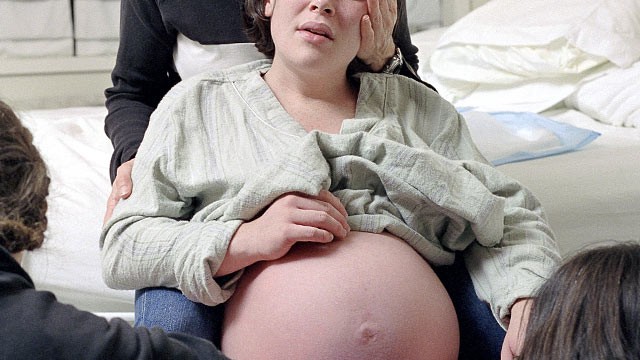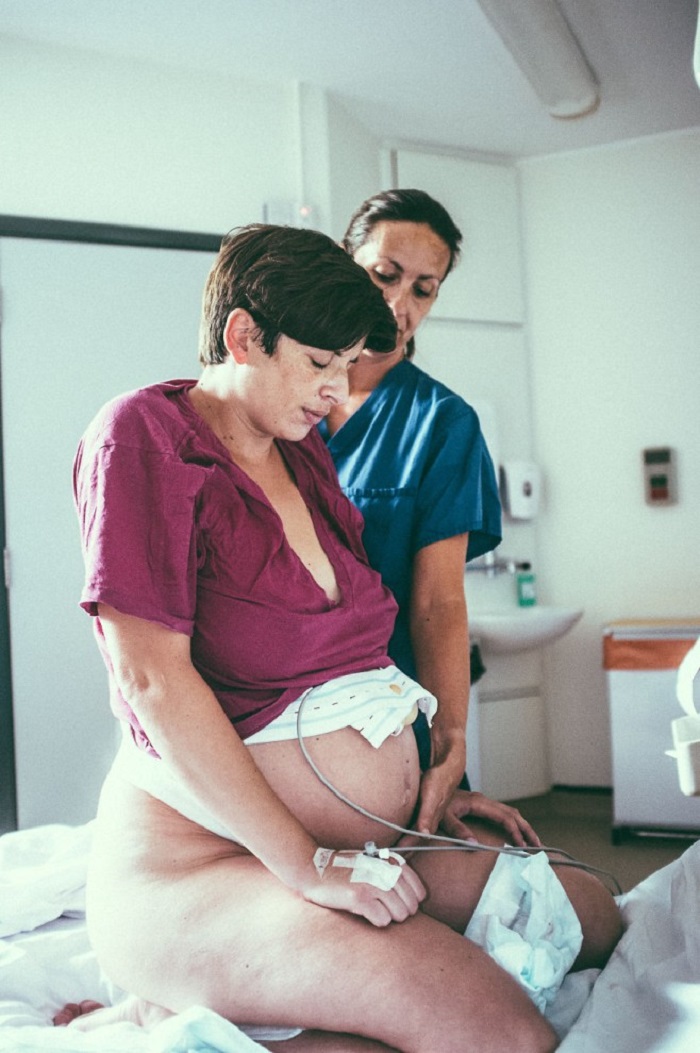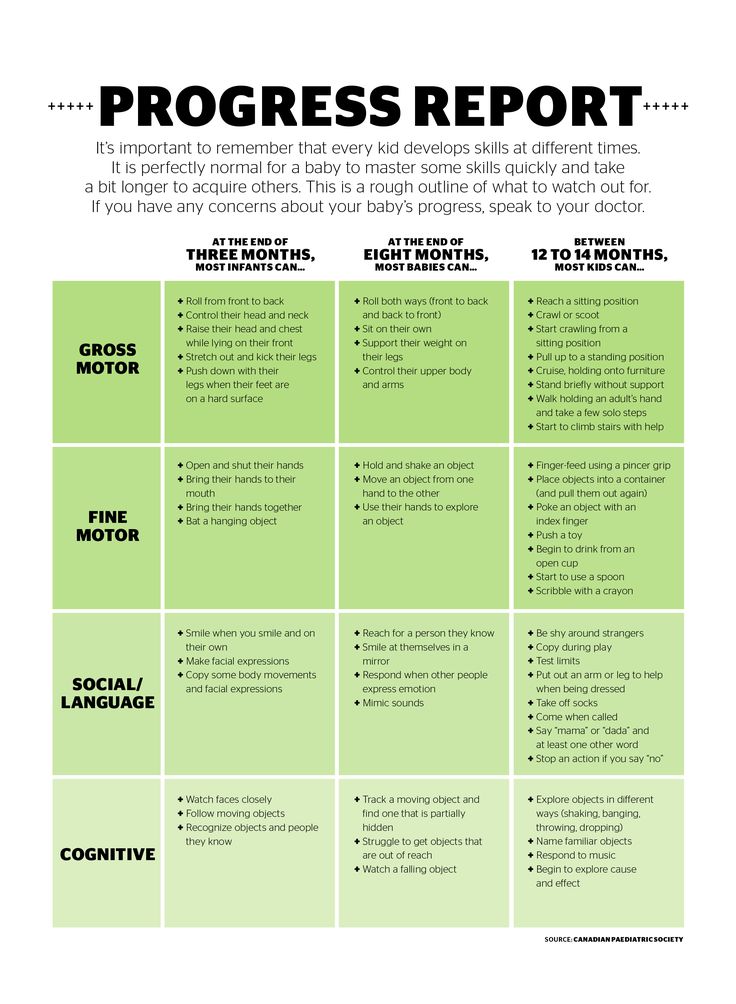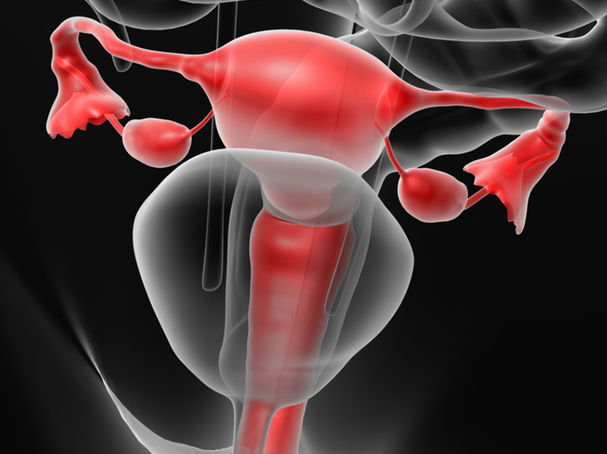When does a woman give birth
How Many Weeks Early Can You Safely Give Birth?
The end of the third trimester of pregnancy is typically full of both excitement and anxiety for baby’s arrival. It can also be physically uncomfortable and emotionally draining.
If you’re in this stage of pregnancy now, you might be experiencing swelling ankles, increased pressure in your lower abdomen and pelvis, and circling thoughts, such as, when will I go into labor?
By the time you reach 37 weeks, labor induction might seem like a beautiful gift from the universe, but researchers recommend waiting until your baby is full term, unless there are major health concerns for you or your baby.
A full-term pregnancy is 40 weeks long. Although health practitioners once considered “term” to be from week 37 to week 42, those last few weeks are too vital to ignore.
It’s in this final crunch time that your body makes its final preparations for childbirth, while your baby completes the development of necessary organs (like the brain and lungs) and reaches a healthy birth weight.
The risk for neonatal complications is lowest in uncomplicated pregnancies delivered between 39 and 41 weeks.
To give your baby the healthiest start possible, it’s important to remain patient. Elected labor inductions before week 39 can pose short- and long-term health risks for the baby. Deliveries occurring at week 41 or later can have increased complications too.
No two women — no two pregnancies — are the same. Some babies will naturally arrive early, others late, without any major complications.
The American College of Obstetricians and Gynecologists categorize deliveries from week 37 to 42 as follows:
- Early term: 37 weeks through 38 weeks, 6 days
- Full term: 39 weeks through 40 weeks, 6 days
- Late term: 41 weeks through 41 weeks, 6 days
- Post-term: 42 weeks and beyond
The earlier your baby is born, the greater the risks to their health and survival.
If born before week 37, your baby is considered a “preterm” or “premature” baby. If born before week 28, your baby is considered “extremely premature.”
Babies born between weeks 20 to 25 have a very low chance of surviving without neurodevelopmental impairment. Babies delivered before week 23 have only a 5 to 6 percent chance of survival.
Nowadays, preterm and extremely preterm babies have the benefit of medical advances to help support the continued development of organs until their level of health is equivalent to that of a term baby.
If you know you’ll have an extremely preterm delivery, you can work with your healthcare practitioner to create a plan for the care you and your baby will receive. It’s important to talk openly with your doctor or midwife to learn all of the risks and complications that may arise.
One of the most important reasons you want to reach full term in pregnancy is to ensure the complete development of the baby’s lungs.
However, there are many factors related to the mom, baby, and placenta which will require the healthcare practitioner, doctor, or midwife to balance the risks associated with reaching full term against the benefit of full lung maturity.
Some of these factors include placenta previa, a prior cesarean or myomectomy, preeclampsia, twins or triplets, chronic hypertension, diabetes, and HIV.
In some cases, delivery earlier than 39 weeks is necessary. If you go into labor early or if your healthcare provider recommends labor induction, it’s still possible to have a positive, healthy experience.
According to the National Center for Health Statistics, most babies are born full term. To be specific:
- 57.5 percent of all recorded births occur between 39 and 41 weeks.
- 26 percent of births occur at 37 to 38 weeks.
- About 7 percent of births occur at weeks 34 to 36
- About 6.5 percent of births occur at week 41 or later
- About 3 percent of births occur before 34 weeks of pregnancy.
Some women experience recurrent preterm deliveries (having two or more deliveries before 37 weeks).
Just like having a previous preterm baby is a risk factor for having another preterm baby, women with a prior post-term delivery are more likely to have another post-term delivery.
The odds of having a post-term birth increase if you are a first-time mother, having a baby boy, or obese (BMI greater than 30).
Most of the time, the cause of a premature birth remains unknown. However, women with a history of diabetes, heart disease, kidney disease, or high blood pressure are more likely to experience preterm deliveries. Other risk factors and causes include:
- pregnant with multiple babies
- bleeding during pregnancy
- misusing drugs
- getting a urinary tract infection
- smoking tobacco
- drinking alcohol during pregnancy
- premature birth in a previous pregnancy
- having an abnormal uterus
- developing an amniotic membrane infection
- not eating healthy before and during pregnancy
- a weak cervix
- a history of an eating disorder
- being overweight or underweight
- having too much stress
There are many health risks for preterm babies. Major life-threatening issues, like bleeding in the brain or lungs, patent ductus arteriosus, and neonatal respiratory distress syndrome, can sometimes be successfully treated in the neonatal intensive care unit (NICU) but often require long-term treatment.
Other risks involved with preterm deliveries include:
- developmental delays
- trouble breathing
- vision and hearing problems
- low birth weight
- difficulties latching onto the breast and feeding
- jaundice
- difficulty regulating body temperature
Most of these conditions will require specialized care in a NICU. This is where the healthcare professionals will perform tests, provide treatments, assist breathing, and help feed premature infants. The care a newborn receives in the NICU will help ensure the best quality of life as possible for your baby.
Things to know about the NICU
For families who do end up with a baby in the NICU, there are a few simple things that can make a huge difference for baby’s overall health and recovery.
First, practicing kangaroo care, or holding baby directly skin to skin has been shown to reduce rates of mortality, infection, illness, and the length of hospital stay. It can also help parents and babies bond.
Second, receiving human breast milk in the NICU has been found to improve survival rates and dramatically reduce rates of a severe gastrointestinal infection called necrotizing entercolitis compared to babies who receive formula.
Moms who give birth to a preterm baby should start pumping breast milk as soon as possible after birth, and pump 8 to 12 times per day. Donor milk from a milk bank is also an option.
Doctors and nurses will watch your baby as they grow to ensure proper care and treatment, if it’s necessary. It’s important to stay informed, find the appropriate specialized care, and remain consistent with any future treatments and appointments.
Though there are no magical spells to ensure full-term pregnancies, there are a few things you can do on your own to lower your risk of early labor and birth.
Before getting pregnant
Get healthy! Are you at a healthy weight? Are you taking prenatal vitamins? You’ll also want to cut back on alcohol, try to stop smoking, and not misuse any drugs.
Exercise regularly and try to eliminate any unnecessary sources of stress from your life. If you have any chronic health conditions, get treated and remain consistent with treatments.
During pregnancy
Follow the rules. Eat healthy and get the proper amount of sleep. Exercise regularly (be sure to check with your healthcare provider before beginning any new exercise routine during pregnancy).
Go to every scheduled prenatal appointment, give an honest and thorough health history to your healthcare provider, and follow their advice. Protect yourself from potential infections and sickness. Make an effort to gain the appropriate amount of weight (again, talk to your OB about what’s ideal for you).
Seek medical attention for any warning signs of preterm labor, such as contractions, constant low back pain, water breaking, abdominal cramps, and any changes in vaginal discharge.
After delivery
Wait at least 18 months before trying to conceive again. The shorter the time is between pregnancies, the greater the risk for a preterm delivery, according to the March of Dimes.
The shorter the time is between pregnancies, the greater the risk for a preterm delivery, according to the March of Dimes.
If you’re older than 35, talk to your healthcare provider about the appropriate amount of time to wait before trying again.
Giving birth unexpectedly to a premature or post-term baby can be stressful and complicated, especially when it can’t be prevented. Talk with your doctor or midwife and stay informed.
Learning as much as you can about the procedures and treatments available to you and your baby will help lower anxieties and give you a sense of control.
Keep in mind that the options and support for premature babies have improved over the years, and the odds of leaving the hospital with a healthy baby are higher than ever before. The more you know, the better prepared you’ll be to provide your little one with all of the love and care they deserve.
How Many Weeks Early Can You Safely Give Birth?
The end of the third trimester of pregnancy is typically full of both excitement and anxiety for baby’s arrival. It can also be physically uncomfortable and emotionally draining.
It can also be physically uncomfortable and emotionally draining.
If you’re in this stage of pregnancy now, you might be experiencing swelling ankles, increased pressure in your lower abdomen and pelvis, and circling thoughts, such as, when will I go into labor?
By the time you reach 37 weeks, labor induction might seem like a beautiful gift from the universe, but researchers recommend waiting until your baby is full term, unless there are major health concerns for you or your baby.
A full-term pregnancy is 40 weeks long. Although health practitioners once considered “term” to be from week 37 to week 42, those last few weeks are too vital to ignore.
It’s in this final crunch time that your body makes its final preparations for childbirth, while your baby completes the development of necessary organs (like the brain and lungs) and reaches a healthy birth weight.
The risk for neonatal complications is lowest in uncomplicated pregnancies delivered between 39 and 41 weeks.
To give your baby the healthiest start possible, it’s important to remain patient. Elected labor inductions before week 39 can pose short- and long-term health risks for the baby. Deliveries occurring at week 41 or later can have increased complications too.
No two women — no two pregnancies — are the same. Some babies will naturally arrive early, others late, without any major complications.
The American College of Obstetricians and Gynecologists categorize deliveries from week 37 to 42 as follows:
- Early term: 37 weeks through 38 weeks, 6 days
- Full term: 39 weeks through 40 weeks, 6 days
- Late term: 41 weeks through 41 weeks, 6 days
- Post-term: 42 weeks and beyond
The earlier your baby is born, the greater the risks to their health and survival.
If born before week 37, your baby is considered a “preterm” or “premature” baby. If born before week 28, your baby is considered “extremely premature. ”
”
Babies born between weeks 20 to 25 have a very low chance of surviving without neurodevelopmental impairment. Babies delivered before week 23 have only a 5 to 6 percent chance of survival.
Nowadays, preterm and extremely preterm babies have the benefit of medical advances to help support the continued development of organs until their level of health is equivalent to that of a term baby.
If you know you’ll have an extremely preterm delivery, you can work with your healthcare practitioner to create a plan for the care you and your baby will receive. It’s important to talk openly with your doctor or midwife to learn all of the risks and complications that may arise.
One of the most important reasons you want to reach full term in pregnancy is to ensure the complete development of the baby’s lungs.
However, there are many factors related to the mom, baby, and placenta which will require the healthcare practitioner, doctor, or midwife to balance the risks associated with reaching full term against the benefit of full lung maturity.
Some of these factors include placenta previa, a prior cesarean or myomectomy, preeclampsia, twins or triplets, chronic hypertension, diabetes, and HIV.
In some cases, delivery earlier than 39 weeks is necessary. If you go into labor early or if your healthcare provider recommends labor induction, it’s still possible to have a positive, healthy experience.
According to the National Center for Health Statistics, most babies are born full term. To be specific:
- 57.5 percent of all recorded births occur between 39 and 41 weeks.
- 26 percent of births occur at 37 to 38 weeks.
- About 7 percent of births occur at weeks 34 to 36
- About 6.5 percent of births occur at week 41 or later
- About 3 percent of births occur before 34 weeks of pregnancy.
Some women experience recurrent preterm deliveries (having two or more deliveries before 37 weeks).
Just like having a previous preterm baby is a risk factor for having another preterm baby, women with a prior post-term delivery are more likely to have another post-term delivery.
The odds of having a post-term birth increase if you are a first-time mother, having a baby boy, or obese (BMI greater than 30).
Most of the time, the cause of a premature birth remains unknown. However, women with a history of diabetes, heart disease, kidney disease, or high blood pressure are more likely to experience preterm deliveries. Other risk factors and causes include:
- pregnant with multiple babies
- bleeding during pregnancy
- misusing drugs
- getting a urinary tract infection
- smoking tobacco
- drinking alcohol during pregnancy
- premature birth in a previous pregnancy
- having an abnormal uterus
- developing an amniotic membrane infection
- not eating healthy before and during pregnancy
- a weak cervix
- a history of an eating disorder
- being overweight or underweight
- having too much stress
There are many health risks for preterm babies. Major life-threatening issues, like bleeding in the brain or lungs, patent ductus arteriosus, and neonatal respiratory distress syndrome, can sometimes be successfully treated in the neonatal intensive care unit (NICU) but often require long-term treatment.
Other risks involved with preterm deliveries include:
- developmental delays
- trouble breathing
- vision and hearing problems
- low birth weight
- difficulties latching onto the breast and feeding
- jaundice
- difficulty regulating body temperature
Most of these conditions will require specialized care in a NICU. This is where the healthcare professionals will perform tests, provide treatments, assist breathing, and help feed premature infants. The care a newborn receives in the NICU will help ensure the best quality of life as possible for your baby.
Things to know about the NICU
For families who do end up with a baby in the NICU, there are a few simple things that can make a huge difference for baby’s overall health and recovery.
First, practicing kangaroo care, or holding baby directly skin to skin has been shown to reduce rates of mortality, infection, illness, and the length of hospital stay. It can also help parents and babies bond.
Second, receiving human breast milk in the NICU has been found to improve survival rates and dramatically reduce rates of a severe gastrointestinal infection called necrotizing entercolitis compared to babies who receive formula.
Moms who give birth to a preterm baby should start pumping breast milk as soon as possible after birth, and pump 8 to 12 times per day. Donor milk from a milk bank is also an option.
Doctors and nurses will watch your baby as they grow to ensure proper care and treatment, if it’s necessary. It’s important to stay informed, find the appropriate specialized care, and remain consistent with any future treatments and appointments.
Though there are no magical spells to ensure full-term pregnancies, there are a few things you can do on your own to lower your risk of early labor and birth.
Before getting pregnant
Get healthy! Are you at a healthy weight? Are you taking prenatal vitamins? You’ll also want to cut back on alcohol, try to stop smoking, and not misuse any drugs.
Exercise regularly and try to eliminate any unnecessary sources of stress from your life. If you have any chronic health conditions, get treated and remain consistent with treatments.
During pregnancy
Follow the rules. Eat healthy and get the proper amount of sleep. Exercise regularly (be sure to check with your healthcare provider before beginning any new exercise routine during pregnancy).
Go to every scheduled prenatal appointment, give an honest and thorough health history to your healthcare provider, and follow their advice. Protect yourself from potential infections and sickness. Make an effort to gain the appropriate amount of weight (again, talk to your OB about what’s ideal for you).
Seek medical attention for any warning signs of preterm labor, such as contractions, constant low back pain, water breaking, abdominal cramps, and any changes in vaginal discharge.
After delivery
Wait at least 18 months before trying to conceive again. The shorter the time is between pregnancies, the greater the risk for a preterm delivery, according to the March of Dimes.
The shorter the time is between pregnancies, the greater the risk for a preterm delivery, according to the March of Dimes.
If you’re older than 35, talk to your healthcare provider about the appropriate amount of time to wait before trying again.
Giving birth unexpectedly to a premature or post-term baby can be stressful and complicated, especially when it can’t be prevented. Talk with your doctor or midwife and stay informed.
Learning as much as you can about the procedures and treatments available to you and your baby will help lower anxieties and give you a sense of control.
Keep in mind that the options and support for premature babies have improved over the years, and the odds of leaving the hospital with a healthy baby are higher than ever before. The more you know, the better prepared you’ll be to provide your little one with all of the love and care they deserve.
Normal pregnancy in women can vary within five weeks
Science
close
100%
Scientists questioned the seemingly unshakable fact that a child develops in the womb for nine months. They just accurately calculated the timing and received a lot of interesting information.
They just accurately calculated the timing and received a lot of interesting information.
The duration of pregnancy in a woman - it would seem, what could be new here? Of course, the well-known nine months is very rounded. Doctors calculate the expected date of birth of a child by counting 280 days from the start of the last menstrual period.
But, according to statistics, only 4% of women give birth after the prescribed 280 days, and 70% fit within plus or minus ten days from the appointed date.
An unexpected conclusion was reached by specialists of the National Institute for Health and the Environment in Durham, USA. They proved that the duration of a normal pregnancy can vary widely - with a range of 37 days, and reported their results in the journal Human Reproduction .
“If you want a boy, douche with soda”
Georgy Mestergazi, chief physician of the hospital for...
July 25, 11:56
The timing of such important processes as ovulation (release of a mature egg from the ovary) and implantation of the embryo into the uterus has so far been estimated very roughly. So, doctors determine the moment of ovulation by raising the morning rectal temperature. But this method carries a large error and, moreover, does not say anything about when the embryo was introduced into the uterine mucosa.
So, doctors determine the moment of ovulation by raising the morning rectal temperature. But this method carries a large error and, moreover, does not say anything about when the embryo was introduced into the uterine mucosa.
The essence of the approach used in this study is the accuracy of determining the moment of conception.
The team used information from 130 women who had previously participated in the North Carolina Pregnancy Study. During the study, urine samples were collected daily from women, which were examined for hormone levels. Changed hCG (chorionic gonadotropin), estrone-3-glucuronide and pregnanediol-3-glucuronide. The day of ovulation was determined by the fall in the ratio between estrogen and progesterone. And the moment of implantation of the embryo into the uterus was defined as the first day of the rise in the level of hCG.
Specialists analyzed the timing of delivery in 125 women with normal pregnancies. And it turned out that the time from the moment of conception to the moment of the birth of a child varies quite a lot.
"We calculated that the average time from ovulation to delivery is 268 days - 38 weeks and two days," says Anna Maria Jukis, author of the study. “However, even when we excluded six cases of preterm birth, we found that the duration of pregnancy varied within 37 days.”
Liver protein will help you get pregnant
The protein that performs the main work in the liver, it turns out, plays a critical role in pregnancy, it was shown ...
01 July 13:45
Until now, it was thought that the variation in the duration of pregnancy was due to errors in determining its onset. Scientists have eliminated errors - and the scatter has even increased. "It's amazing!" Jukis says.
In addition to the variability in the duration of pregnancy, scientists have found that the embryo, which takes longer to implant in the uterus after fertilization of the egg, develops longer. And if at the beginning of pregnancy there was a late rise in progesterone, the pregnancy was shorter than with an early rise, on average by 12 days. Experts were surprised by the fact that the events that occur at the very beginning of pregnancy have an impact on its outcome - on the time of the birth of the child. They conclude that by observing the onset of pregnancy, it is possible to some extent predict its end.
Experts were surprised by the fact that the events that occur at the very beginning of pregnancy have an impact on its outcome - on the time of the birth of the child. They conclude that by observing the onset of pregnancy, it is possible to some extent predict its end.
Jukis and colleagues analyzed a variety of factors that showed a correlation with duration of pregnancy.
Older women had longer pregnancies, with each year of a woman's age adding one day to her pregnancy.
Fertilization for the poor
Belgian researchers have developed a new in vitro fertilization (IVF) technology that is easier...
15 July 09:23
And women who themselves had more weight at birth, bore their child longer. Experts calculated that for every 100 grams of birth weight a mother added one day to her pregnancy. Finally, if a woman's previous pregnancies lasted longer than the average, then the subsequent pregnancy was longer. The latter is regarded by experts as evidence of the influence of a woman's individuality on this indicator.
So, the authors of the study come to the conclusion that the duration of a woman's pregnancy can vary greatly and depends on many factors, even with an accurate determination of the moment of ovulation. They suggest that the "timecode" of pregnancy can be more or less accurately determined based on the hormonal events of the first two weeks after conception and the length of previous pregnancies.
However, they believe that it is premature to make any clinical recommendations based on the results obtained. This will require additional research. But at the very least, doctors need to be aware that five weeks off the estimated due date is normal.
Subscribe to Gazeta.Ru in News, Zen and Telegram.
To report a bug, select the text and press Ctrl+Enter
News
Zen
Telegram
Picture of the day
White House: The US has not received a "convincing" explanation from the Russian Federation for postponing the START meeting
Ukraine asked for missiles with a range of 800 km. What can the West tell her?0005
What can the West tell her?0005
Russian oil has become so cheap that the ceiling is no longer needed
Bloomberg reported a decrease in the price of Urals oil below the price ceiling proposed by the EU
Reuters: Blinken intends to announce assistance to Ukraine in restoring energy supply
Defense News: in the event of the transfer of Patriot air defense systems to Kyiv, Germany will have to send troops to Ukraine
White House: US does not force Ukraine to negotiate with Russia
Drivers will no longer be punished for using antidepressants
News and materials
The winner of the "Voice" Volchkov said that the dressing room of the singer was liquidated in the Gradsky Theater
Novatek reduced LNG supplies to Asia via the Northern Sea Route by 30% due to Europe
Nikita Dzhigurda revealed the "secret of great sex"
In Novosibirsk, the level of air pollution has reached a maximum of 10 points
Vaitsekhovskaya named the undisputed leader in men's singles in Russia
In the Irkutsk region, a rat fell by the collar of a child on the porch of a clinic
In Krasnoyarsk, a 14-year-old teenager was suspected of killing his stepfather
Poll: almost 90% of parents are dissatisfied with the quality of school education
Expert Mangott: Kyiv is running out of air defense missiles due to massive Russian strikes
Guberniev called for the return of Ronaldo's "stolen" goal in the match with Uruguay
Izvestia: a ban on the transit of ships without insurance through the Bosporus may lead to an increase in prices
Consul General Shtodin: Uss, who was detained in Milan, should be placed under house arrest November 30,
Dixon polar bear training video
In Kyiv, a native of the Donetsk region killed his wife and disguised the crime as a suicide
FT: European countries have increased LNG imports from Russia by 42% over the past 10 months
Former player Semshov suggested who Russian fans will root for at the 2022 World Cup
Rogov: IAEA call to Kyiv to cease fire on ZNPP would help defuse the situation
NATO Foreign Ministers will discuss strengthening support for Ukraine and the implementation of a new concept 29 November
All news
"This is a perversion. " Moscow responded to the words of the Pope of Rome about the cruelty of the Buryats and Chechens
" Moscow responded to the words of the Pope of Rome about the cruelty of the Buryats and Chechens
Zakharova said that the words of the Pope of Rome about the Chechens and Buryats are worse than Russophobia
Russian military operation in Ukraine. Day 278
Online broadcast of the military special operation in Ukraine — Day 278
"It never occurred to me that a girl was with a girl." The deputy accused Tatu of the appearance of lesbians
The State Duma deputy accused the Tatu group of spreading LGBT propaganda
“Lebanon is no longer an independent state”
How the USA and Syria deprived Beirut of its independence
"Sanctions against the bloody regime are ridiculous." Why was the niece of the Iranian Ayatollah arrested?0005
Iranian Ayatollah Khamenei's niece was arrested for making anti-government calls
Director Ivan Sosnin talks about Distant Lovers, the last role of Yevgeny Sytoy and the power of good cinema
Director Ivan Sosnin talks about the last role of Evgeny Sytoy
Back to the past: the stars "meet" themselves young
No nuclear war and falsification of history. Putin and Tokayev signed a declaration
Putin and Tokayev signed a declaration on the occasion of the 30th anniversary of diplomatic relations
Used drugs and got behind the wheel. New details of a deadly accident in Moscow
New details of a deadly accident in Moscow
Moscow Prosecutor's Office: the woman who killed her mother and child was under the influence of drugs
The Council of the EU recognized the circumvention of anti-Russian sanctions as a crime
The Council of the EU unanimously declared the circumvention of sanctions a crime against the European Union
Peskov denied rumors about the withdrawal of troops from Energodar and Zaporozhye NPP
Peskov said that he did not see the call of the mothers of the mobilized to withdraw troops from Ukraine
Spring deliveries. Boeing wants to give Kyiv bombs that can hit Russia
Reuters: Boeing offered to supply Kyiv with ammunition to hit Russia
Mercury, bismuth and arsenic were found in Saakashvili's analyzes. Experts talk about poisoning
Saakashvili's lawyer said that arsenic was found in the body of the former Georgian president
At what age do Russian women give birth?
Rosstat takes into account not only fertility statistics, but also related data: for example, at what age do Russian women give birth. Such information has been collected annually since the early sixties. We looked at how the situation has changed over the past decades and how different regions of the country differ from each other in this regard.
When the first and subsequent children are born more often
In total, 1,436,514 children were born in Russia then. Three were born to mothers under the age of 13, 363 were born from women over 50. The birth rate among minors is declining, and among older Russian women it is growing, but such situations are still rare. Interestingly, scientists are not interested in the age of the fathers: it is more difficult to establish reliably, plus it is not so important for the demographics of the country.
Interestingly, scientists are not interested in the age of the fathers: it is more difficult to establish reliably, plus it is not so important for the demographics of the country.
The average age of a woman at birth was 28 years and 7 months. It is important that this is the average age of all mothers, without division into those who gave birth for the first time, for the second, third or subsequent times: the media is sometimes confused about these indicators. In two out of three cases, newborn Russians already had an older brother or sister by mother.
/platnie-rodi/
How much does it cost to give birth in Moscow
First-born Russian women most often give birth at the age of 24-25 years. The mean age was 25.9of the year. This is later than in the ideal scenario of the Russians: according to opinion polls, the Russians consider the optimal age for the birth of the first child to be 25 years old. But men believe that it is better to have a first child when the partner is 19-24 years old, and women say that the optimal age for this is 25-29 years.
Fertility rates by mother's age and birth order, Center for Demographic Research
The second child is born at an average of 32 years, the third - at 34. This does not mean that the average mother gives birth to two children in three years: women who decide to have a third child give birth to their first child 2.6 years earlier.
What influences the age at which children were born
In the distant past, the age at which the first child was born was almost entirely determined by the age of marriage: in traditional societies, sex was approved only after the formalization of the relationship. Now the “wedding night” rarely becomes the first really: 67% of Russians consider sex before marriage to be normal.
Among citizens of "marriage" age - from 18 to 34 years - there are even more of them: 84%. Perhaps that is why the average age of marriage has increased since the mid-nineties of the last century: from 19up to 25 years - in women, from 23 to 27 - in men.
And many Russians have a child without formalizing the relationship at the registry office: in 2020, 21.6% of Russian babies were born to unmarried women. But half of these children were registered "on a joint application of the father and mother", that is, the parents, most likely, maintained a relationship.
/prava/grazhdanskiy-brak/
Rights in civil marriage
In today's society, the age of marriage still greatly influences the time of the birth of the first child. However, with the spread of contraceptives, the desires and plans of women themselves became more important. One of the main factors today is how many children a woman wants to have in principle. If she plans to be a mother of many children, she starts giving birth earlier. Therefore, in regions where traditionally large families and the highest birth rate - for example, in Chechnya and Tuva - the first children are born early, on average at 23.4 and 23.7 years, respectively.
They also give birth early in Dagestan: at 23.5 years. In terms of the birth rate, this region is only in eighth place in Russia, and demographers explain the early age of birth here by cultural norms. But traditions and the spread of having many children in the environment where a person lives are very important: according to Rosstat polls, the more brothers and sisters a woman has, the more children she wants to have herself.
The youngest people give birth in St. Petersburg, Moscow and Sevastopol: the average age of birth of the first child here is 28.1, 27.8 and 26.9years respectively. In these regions, other traditions play a particularly important role.
According to demographers, in the cities young women devote most of their time to work - voluntarily or forcedly. To find a good job, they must be educated. Women with higher education marry later and, accordingly, have children later. They also have more time between marriage and the birth of a child: 17. 2 months versus 8.8 for women with a secondary education.
2 months versus 8.8 for women with a secondary education.
/gender-gap/
How much do you earn compared to colleagues of the opposite sex? At the same time, there was a different trend in the West.
Russian economists explain this by economic factors: under the socialist system, families with children received free apartments faster than those without children, and women who did not belong to the nomenklatura saw no reason to put off having children for the sake of education or work, because they often had no career prospects.
Since 1994, when mothers were at a record young age of 22.53 years at the birth of their first child, the average birth age in Russia has begun to increase. The level of 1960 was surpassed in 2008.
The age of the mother at the birth of the first child, a study by the sociological center of the Russian Academy of Sciences, Moscow State University and the Research Institute of Health Organization and Medical Management
This is a global trend that scientists call the demographic transition. To put it in simple terms, with an increase in life expectancy and its quality, young women prefer not to give birth, but to study, have fun and earn money. Including in order to provide better conditions for their future children. They also have affordable contraceptives and, in principle, do not plan to have more than two children.
To put it in simple terms, with an increase in life expectancy and its quality, young women prefer not to give birth, but to study, have fun and earn money. Including in order to provide better conditions for their future children. They also have affordable contraceptives and, in principle, do not plan to have more than two children.
In most developed countries, the average age of a primiparous woman is now approaching 30 years. They give birth later in Spain and Switzerland: at 31.2 and 31.1 years, respectively. Russia is still far from this mark, especially since, according to preliminary data from domestic demographers, the average age of mothers in Russia has not been growing in recent years.
Source: Human Fertility Database Source: Human Fertility DatabaseWhat doctors say about the optimal age for having a first child
Olga Kashubina
medical editor T—F
Author profile
from 19 to 30 years old.
During this period, the eggs, as a rule, have a minimum number of genetic defects, and the expectant mother herself is more likely not to have acquired serious chronic diseases that can interfere with the successful conception and bearing of a child. This is also evidenced by the statistics of reproductologists: after 35 years, the chance to give birth to a child without assistive technologies is halved compared to 25-year-olds.
This is also evidenced by the statistics of reproductologists: after 35 years, the chance to give birth to a child without assistive technologies is halved compared to 25-year-olds.
At the same time, a lot of other factors are superimposed on abstract recommendations about the optimal age of motherhood: many women under 30 are not ready for pregnancy for various reasons - and this is normal. The structure of modern society here comes into conflict with biology: an attempt to meet the "biological" recommendations for reproduction can mean an early unsuccessful marriage, an abandoned education, a failed career, financial problems and, as a result, severe stress from parenthood.
Again, the health status of some women may improve with age - due to a more conscious attitude to nutrition, the rejection of bad habits, and, conversely, the inclusion of physical education in the weekly routine.
At the same time, modern reproductive technologies are developing year by year - they are becoming safer, more efficient, more affordable, including through government funding.











